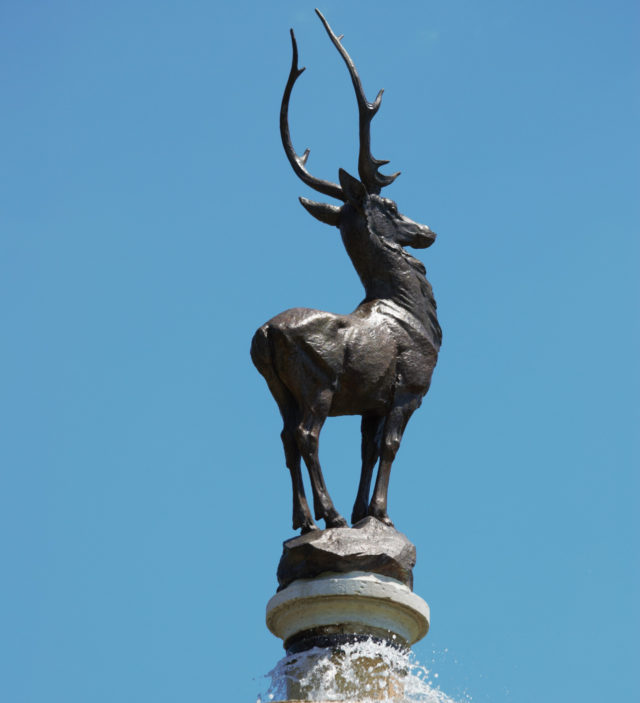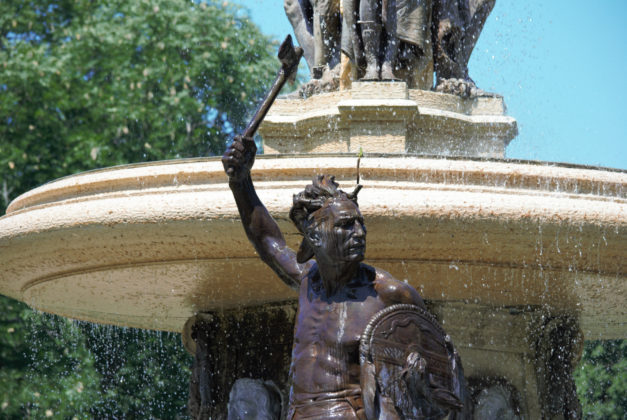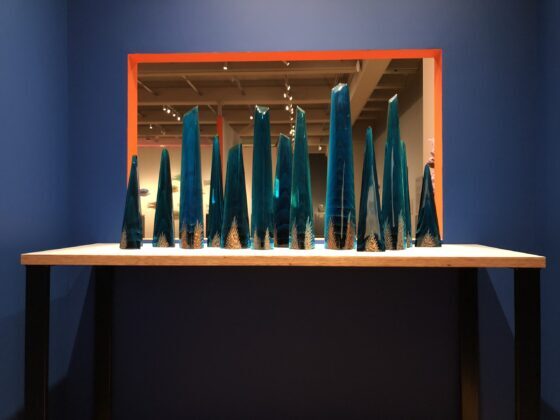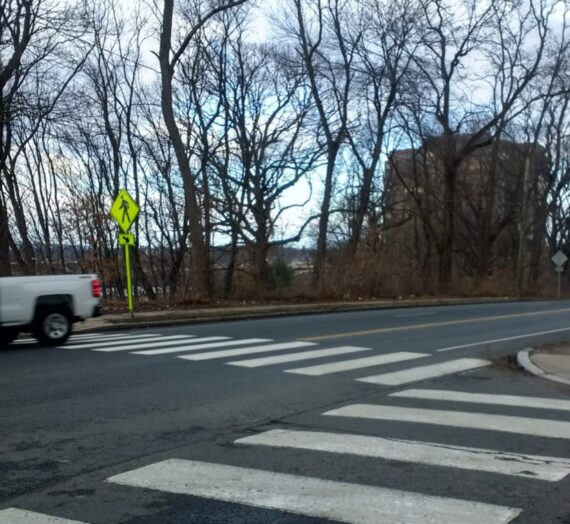This is a polite letter about the Corning Fountain, in Hartford’s otherwise beautiful Bushnell Park. An antique dealer has informed as that the fountain is worth at least $50. The dealer is in the junk business, collecting antique or worn-out items and converting them into modern money. […]
In all sincerity I state my opinion that the Corning Fountain is a monstrosity and an anachronism. Its awkwardly posed and poised Indians present only a comical, ridiculous tableau as they stand befeathered beneath the occasional rains of nature or the Water Bureau.
If friends of the fountain consider it symbolic of the American Indian, let them try to justify the utter stupidity offered by the foolish fountain and its Indians. Can even the most ardent friends of the fountain imagine an Indian, let alone a group of Indians, standing stoically in a steady downpour of water without seeking shelter . . . ? It is an insult to all American Indians, either living or dead.
This excerpt from a letter to the Hartford Courant‘s editor ran in 1949, yet it was not the first to critique what is, at best, the equivalent of giving your niece — who lives 100 miles away — a puppy.
John J. Corning, the banker who funded this “foolish fountain”, was born in Hartford and according to one of his obituaries, he descended from over 30 of the city’s settlers including governors Thomas Welles and John Webster, along with Matthew Allyn who owned the land that would later become Bushnell Park. Verifying or disproving that claim is not what I want to spend time on here though, because regardless of its veracity, this reputation gives you an idea of what’s behind the monument that you have probably passed by dozens of times.
What is known is that Corning left Hartford while young, making a home for himself in New York, maintaining his connection to his hometown through family ties. In the autumn of 1897, Hartford’s park commissioners accepted John Massey Rhind’s design for what would be a memorial to Corning’s father (John Benton Corning) who died almost two years before.
Two decades later, John J. Corning would die at the Plaza Hotel. What followed was this description by the Courant of his funeral arrangements:
Simplicity characterized the funeral and in the manner and method of burial, nothing of show or ostentation was observed.
The burial required contractors to work non-stop in shifts to prepare the “cast stone and steel sarcophagus” while it took two trucks to transport the vault. There’s more:
The under surface vault of stone and steel is estimated to weigh, with the solid bronze casket and the solid copper case enclosing it, fully fifteen tons.
But that’s not all:
The casket of bronze was really two caskets in one, the interior having a lid of bevel plate glass, so the remains could be viewed full length without breaking the hermetically sealed inner casket.
A solid bronze casket alone, without all the other flair, costs around $10,000 today. If that sounds modest, you and I are not in the same socioeconomic class.
Corning really liked bronze, apparently, and that was obvious before his funeral.
Corning Fountain, made of bronze and stone, was installed in 1899. Briefly, for those who have not seen it, the figures include(d) animals native to Connecticut (puma, bear, fox, and beaver) and Rhind’s version of Saukiog men and women.
Perhaps the most endearing aspect of this creation is that it is topped by a visual pun. The hart (or deer, to us great unwashed) is fording a “river”.

Very cute.
As cute as that aforementioned gift of a puppy.
While Corning funded the creation and installation of the fountain, it seems it has been Hartford’s problem for most of its life.
At first, the fountain had both water and lights. The red, white, blue, and green lights debuted during a snow storm in November 1899. Those lasted for awhile, but the fountain went dry before it had reached its first birthday. There was a water shortage in 1899 and 1900, and the fountain was estimated to use 32,000 gallons per hour. By June 1900, the water problem had made its way into the papers, as the fountain had been dry for days and would remain so in the absence of rain. By the end of that summer, a pipe would connect the fountain to the now-defunct Garden Street Reservoir; this pipe crossed the not-yet-buried Park River.
Just two years later, Corning and Rhind made a special trip to Hartford to inspect the fountain. It had already cracked. There were attempts to reassure the public that these were minor issues and that a little maintenance would take care of it. For a time, this must have worked, as Elizabeth Colt hired Rhind to design a memorial for her husband in 1905. (This is now on view in Colt Park)
By 1913, long droughts left the fountain dry once more. When Corning was buried in 1917, the “fountain plays as remains are lowered into grave” — or so the papers claimed. It was noteworthy that water was flowing as intended.
Thirteen years later, too much water damaged the fountain’s light system. Those were never restored to their original condition.
The fountain did not run from 1936 through 1948. Getting the work done dragged on, in part because of major changes happening in Bushnell Park. The burial of the Park River, lacking actual ostentation, meant that the once scenic park was now a mess that some described as a “desert” and others called a “no-man’s land.”
After the river was shoved into a conduit and the landscape was left a barren mess, there was talk of moving Corning Fountain to the green space in the middle of Pulaski Circle. Quite a few people wrote letters to the paper in protest of the move, while at least two folks advocated for it to be moved to the scrapyard. A restoration followed harsh reports of the dry basin being a place for broken glass and other litter to collect.
Then, there was the vandalism, most of which has undoubtedly gone without widespread notice. In 1958, somebody (or somebodies, more likely) “dabbed” silver paint here and there, including on the deer. That takes climbing skills or a ladder. During this same era, soap flakes were dumped in the fountain, causing it to bubble over. The next year, in 1969, the bronze bear head was removed. In 1980, during a park concert, someone reportedly removed the hatchet from one of the figure’s hands, and chased somebody through the park with it. And in 2005, there was an attempt at a political message in the form of graffiti: “Hey whitey, thanks for the blankets” — presumably a reference to the spread of smallpox.
Though hardly vandalism, there has been a long infatuation with the media giving attention to those who have entered the fountain’s waters– either while inebriated or as innocent waders.
There were more attempts at restoration in the mid-1980s, following another fountain dry spell of over six years. Again, the fountain was restored in 2000 to address erosion attributed to acid pollution and water.
In recent years, we can see how this gift continues to be trouble, covering a park path with a large puddle in some seasons or spraying erratically in others. This year, one of the figures began to slip off its pedestal and needed to be fixed.
Speaking of those “figures,” it’s hard to feel anything but ambivalence toward Rhind’s portrayal of Hartford’s first people.
J. Massey Rhind, born in Scotland, came to the United States about a decade before his monument in Hartford was installed. Living in New York City, then settling in New Jersey halfway between the Tappan Zee and GWB, the artist had no shortage of work. He’s credited with designing DC’s Grand Army of the Republic memorial, the Victory and Peace figures on Grant’s Tomb, and numerous other monuments and fountains, along with decorations for buildings.
He also designed Philadelphia’s Tedyuscung Statue, erected only a few years after Corning Fountain. It sits in Wissahickon Valley Park, and the park’s Friend group tells us this:
It is a limestone statue of a crouching Native American with his hand to his brow looking west. It stands high up on what is known as Council Rock, by legend where the Lenape would hold their tribal meetings.
Many descriptions of this monument explain that the sculpture is supposed to represent the Lenape, rather than the chief specifically, but as the Friends group puts it:
It is not accurate in depicting a Lenape warrior because the headdress is that of a western Plains Native American.
Sound familiar? It should.
The Friends group tells us:
It is not an original statue either. The sculptor J. Massey Rhind, who also did the Henry Houston statue [in Wissahickon Valley Park], sculpted a Saukiog brave in a similar pose and dress for the Corning Fountain in Hartford, Connecticut. J. Massey Rhind was not alone in his inaccuracies because at the turn of the century, this was how Native Americans were usually portrayed.
Hidden City is more direct when it comes to the statue in Philly:
The sculpture might still be a nice tribute, a great showing of admiration and respect for a displaced people. Or it would be if the figure was not wearing a very distinct Plains Indian war bonnet. There is nothing about the posture or the dress of the figure that evokes the lives of the Lenape. Worse still, there were ample paintings of Lenape that show their style and dress available to the artist. […] Rhind sculpted the Corning Fountain in Hartford’s Bushnell Park, a massive tableau featuring a deer surrounded by various figures of Saukiog Indians, the first inhabitants of that region. Here, then, is our mistaken Tedyuscung peering into the distance. Rhind appears to have simply recycled one of his Saukiog as a Lenape. Unfortunately, the Saukiog figures, too, are dressed as Plains Indians.
Looking at how Corning Fountain’s figures are attired, you might assume Hartford is closer to the equator. All women on the fountain, topless? Maybe during the fourth heat wave of the year. Not in January. Definitely not in a pre-colonial, pre-industrial, and pre-climate disaster era.
The fountain’s men are treated with a little more nuance, at least getting to take active poses, though it’s hard to make the case that they are an accurate portrayal of the Saukiog, Hartford’s first inhabitants. Given the circumstances (project funder’s entire family apparently having direct connection to the “settling” of Hartford, along with the repeated claim that the fountain was Rhind’s attempt to tell the history of those indigenous to this area), an accurate depiction of the Saukiog seems like the least the designer and funder could do.
When the Courant announced the fountain’s design in 1897, it said the piece would have “columns of maize” (corn), “Indian maidens,” and the heads of “native Connecticut wild animals” from which water would flow. There would be “four heroic figures in bronze of native Indians in the tribal costumes, and in attitudes of watching, or preparing for war or for the chase, and possibly, if we took a sentimental view of Indians, in a position to protect the maidens of the fountain.” As it was being installed, the newspaper’s description added that these “figures are life-size and are modeled from life, and represent three girls of the aborigines clad in skins from the chase and much adorned with wampum and rude jewelry.”
While “rude jewelry” would make a great punk band name, these statements serve as a reminder for how important it is that individuals and our broader society constantly learn and evolve.
While this should not be read as a call to remove the fountain, it’s healthy to ask ourselves if what used to serve us continues to — whether we are talking about temperamental fountains, monuments to unstellar men, or highways.
More practical than statue/monument/fountain removal, is providing more complete information about what the work represents. As the Friends group in Philadelphia shows us, you don’t need to gloss over the truth. It’s possible to at once think “I like how this fountain spills water from beneath a deer” and “What I am looking at is historically inaccurate and generally bullshit.”



Richard Nelson
“What I am looking at is historically inaccurate and generally bullshit.” The folks at Furbirdsqueerly agree with this statement 100%.
Another great article from the mind and pen of Kerri Provost. Thanks.